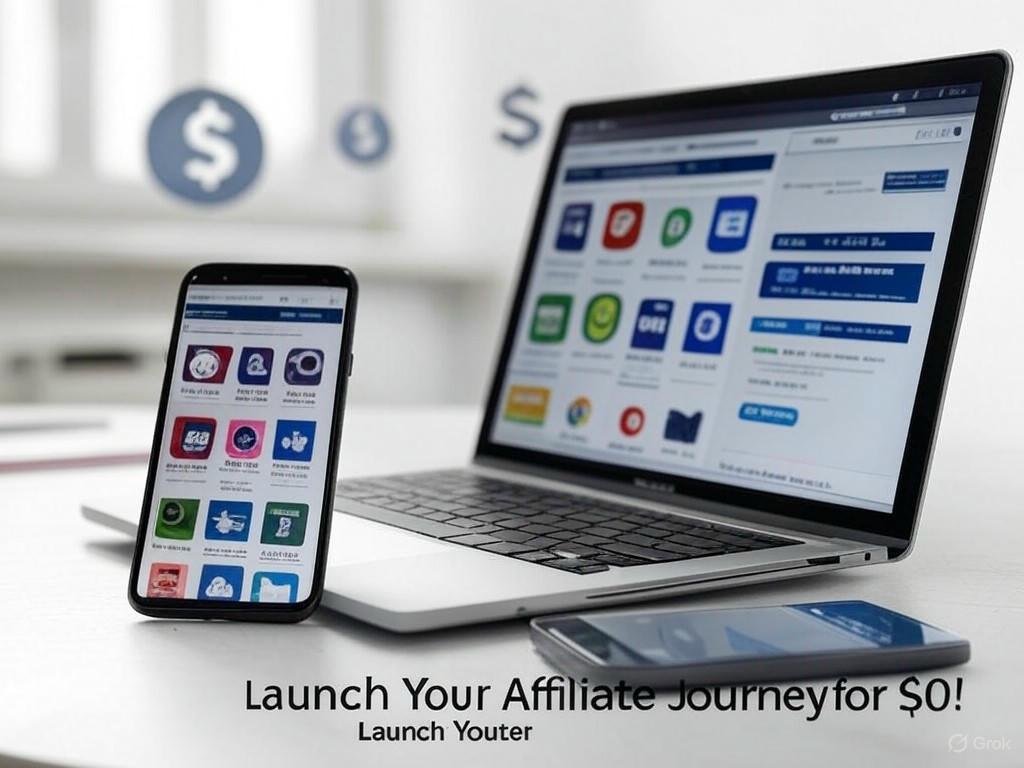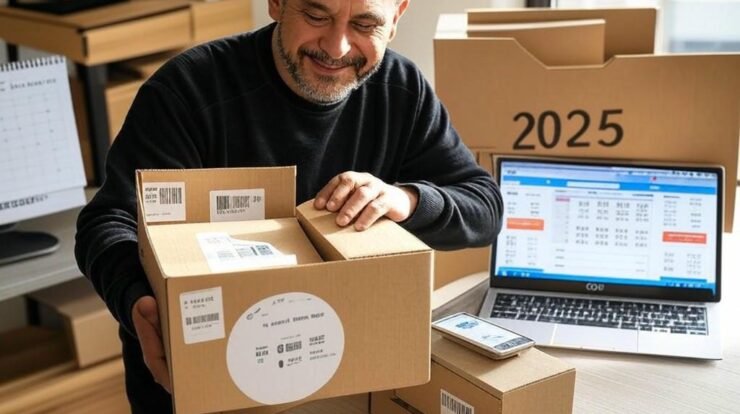Affiliate marketing is one of the most accessible ways to start earning money online, and the best part? You don’t need a big budget to get started. If you’re wondering how to start affiliate marketing with no money, you’re in the right place. This guide will walk you through a step-by-step process to kick off your affiliate marketing journey without spending a single cent. With a mix of strategy, persistence, and resourcefulness, you can build a sustainable income stream using free tools and platforms. As someone who’s navigated the affiliate marketing world for years, I’ll share practical tips, real-world insights, and proven methods to help you succeed.
What Is Affiliate Marketing and Why Start with No Money?

Affiliate marketing is a performance-based business model where you earn a commission by promoting other people’s products or services. When someone clicks your unique affiliate link and makes a purchase, you get a cut of the sale. It’s a win-win: companies get more customers, and you earn money without creating products or handling customer service.
Starting with no money is appealing because it lowers the barrier to entry. You don’t need to invest in inventory, expensive software, or paid ads to make it work. Instead, you leverage free platforms, organic traffic, and your own creativity to drive results. The key is to focus on strategies that maximize your time and effort while keeping costs at zero.
Step 1: Choose a Niche You’re Passionate About
The first step in starting affiliate marketing with no money is picking a niche—a specific topic or industry you’ll focus on. Your niche should align with your interests or expertise because you’ll be creating content around it consistently. A well-chosen niche also helps you target a specific audience, making it easier to promote relevant products.
How to Pick a Niche Without Spending
- Brainstorm Your Interests: Think about topics you enjoy, like fitness, personal finance, or home gardening. Passion keeps you motivated when money isn’t flowing yet.
- Research Market Demand: Use free tools like Google Trends to see what topics are popular. For example, search for “vegan recipes” or “budget travel tips” to gauge interest.
- Check Affiliate Programs: Look for niches with plenty of affiliate programs. Websites like Amazon Associates, ClickBank, or ShareASale (all free to join) offer products in countless categories. Make sure your niche has enough products to promote.
Pro Tip: Avoid overly broad niches like “health” or “technology.” Instead, narrow it down to something like “plant-based nutrition” or “budget tech gadgets.” This helps you stand out and attract a dedicated audience.
Read more: Free Earn Money Without Investment – Proven Strategies Unveiled
Step 2: Join Affiliate Programs for Free
Once you’ve chosen a niche, sign up for affiliate programs that align with it. The good news? Most affiliate programs are free to join, and you can start promoting products immediately.
Top Free Affiliate Programs to Consider
- Amazon Associates: Offers a wide range of products, from books to electronics, with commissions up to 10%. Perfect for beginners.
- ClickBank: Specializes in digital products like eBooks and courses, with higher commissions (sometimes 50-75%).
- ShareASale: Connects you with thousands of merchants across niches like fashion, home decor, and software.
- CJ Affiliate: Another platform with a variety of brands, from small businesses to big names.
How to Join
- Visit the program’s website and sign up with your email.
- Provide basic details about your promotional methods (e.g., blog, social media).
- Wait for approval (usually instant or within a few days).
- Once approved, you’ll get access to affiliate links and resources.
Pro Tip: Apply to multiple programs to diversify your income streams. If one program doesn’t perform well, you’ll have others to fall back on.
Step 3: Build a Free Platform to Promote Products
You don’t need a fancy website or paid ads to start affiliate marketing. There are plenty of free platforms where you can share your affiliate links and build an audience.
Free Platforms to Use
- Blogging: Create a free blog on platforms like WordPress.com, Blogger, or Medium. These sites let you publish content without paying for hosting or a domain.
- Social Media: Platforms like Instagram, TikTok, Twitter, and Pinterest are free to use and have massive audiences. Focus on one or two platforms where your target audience hangs out.
- YouTube: Start a channel to create video content. You don’t need expensive equipment—just a smartphone and free editing software like DaVinci Resolve.
- Forums and Communities: Engage in free communities like Reddit, Quora, or niche-specific forums. Share valuable insights and subtly include your affiliate links where allowed.
How to Set Up Your Platform
- Optimize Your Profile: Whether it’s a blog or social media, include a clear bio that reflects your niche. For example, “Helping busy moms find affordable fitness gear” sets expectations.
- Create a Content Plan: Plan a mix of content types—tutorials, reviews, listicles, or personal stories—that naturally incorporate affiliate links.
- Follow Platform Rules: Each platform has guidelines about affiliate links. For example, Amazon requires a disclaimer stating you may earn commissions. Check the rules to avoid getting banned.
Pro Tip: Consistency is key. Post regularly (e.g., 2-3 blog posts or social media updates per week) to build trust and keep your audience engaged.
Read more: Proven Methods – Get Money Fast Online – No Fluff
Step 4: Create High-Quality Content That Converts
Content is the backbone of affiliate marketing with no money. Your goal is to create valuable, engaging content that solves problems for your audience and naturally incorporates affiliate links.
Types of Content to Create
- Product Reviews: Write or record detailed reviews of products in your niche. For example, “The Best Budget Yoga Mats for Beginners” can include Amazon affiliate links.
- How-To Guides: Create tutorials like “How to Start a Keto Diet on a Budget” and link to relevant products (e.g., cookbooks or kitchen tools).
- Listicles: Articles like “10 Must-Have Tools for New Parents” are easy to write and perfect for affiliate links.
- Personal Stories: Share your experiences, like “How I Saved $500 on Groceries with These Apps,” and include links to budgeting tools.
Tips for Creating Content
- Focus on Value: Answer your audience’s questions or solve their problems. For example, if your niche is travel, a post like “How to Pack Light for a Week-Long Trip” is useful and link-friendly.
- Use Keywords: Research keywords like “best budget travel gear” or “affordable fitness equipment” using free tools like Google Keyword Planner. Sprinkle these naturally in your content to attract organic traffic.
- Add Clear Calls-to-Action: Encourage clicks with phrases like “Check out this product” or “See my top pick here” next to your affiliate links.
- Be Honest: Share genuine opinions about products. If a product has flaws, mention them. Transparency builds trust and boosts conversions.
Pro Tip: Repurpose content across platforms. Turn a blog post into a YouTube video or a series of Instagram posts to reach more people without extra work.
Step 5: Drive Free Traffic to Your Content
Without money for ads, you’ll rely on organic traffic to get eyes on your affiliate links. Here are proven ways to drive traffic for free.
Strategies for Free Traffic
- Search Engine Optimization (SEO): Optimize your blog posts or YouTube videos with keywords like “how to start affiliate marketing with no money” or “best free affiliate programs.” Use free tools like Ubersuggest to find low-competition keywords.
- Social Media Engagement: Join groups or hashtags related to your niche. For example, if your niche is fitness, engage in Instagram communities with hashtags like #FitnessMotivation.
- Content Sharing: Share your blog posts or videos in relevant Reddit threads, Quora answers, or Pinterest boards. Be helpful, not spammy—focus on adding value.
- Collaborations: Partner with other creators in your niche. For example, guest post on their blog or do a shoutout exchange on social media.
Avoiding Common Mistakes
- Don’t spam affiliate links everywhere; it turns people off and risks account bans.
- Focus on quality over quantity. One well-optimized blog post or video can drive more traffic than ten low-effort ones.
- Track your results using free analytics tools like Google Analytics (for blogs) or platform insights (for social media).
Pro Tip: Spend time learning basic SEO. Even simple tricks, like using descriptive image alt text or writing compelling meta descriptions, can boost your visibility.
Read more: Real Surveys That Pay Real Money – Your Path to Earning Through Opinions
Step 6: Build Trust and Authority Over Time

To succeed in affiliate marketing, your audience needs to trust you. Building authority takes time, but it’s crucial for long-term success.
How to Build Trust
- Be Transparent: Always disclose that you’re using affiliate links. A simple note like “I may earn a small commission if you buy through my links” works.
- Engage with Your Audience: Respond to comments on your blog, social media, or videos. Answer questions and show you care about their needs.
- Stay Consistent: Post regularly and stick to your niche. Over time, your audience will see you as a reliable source of information.
- Learn and Improve: Stay updated on affiliate marketing trends by following free resources like blogs, YouTube channels, or podcasts in the industry.
Pro Tip: Share your journey. For example, post about your first affiliate sale or a mistake you made. Authenticity resonates with audiences and builds loyalty.
Step 7: Track and Optimize Your Efforts
Even with no money, you can track your performance to see what’s working and what isn’t. Most affiliate programs provide free dashboards to monitor clicks, conversions, and earnings.
How to Track Performance
- Use Affiliate Dashboards: Check your Amazon Associates or ClickBank dashboard regularly to see which links are performing best.
- Analyze Traffic Sources: Use Google Analytics or platform insights to see where your traffic is coming from (e.g., Google, Pinterest, or Instagram).
- Test and Tweak: If a blog post isn’t driving clicks, try updating the headline, adding more keywords, or changing the call-to-action.
Pro Tip: Focus on high-performing content. If a post about “budget travel backpacks” gets lots of clicks, create similar content like “affordable travel accessories.”
Common Challenges and How to Overcome Them
Starting affiliate marketing with no money isn’t without hurdles. Here are some common challenges and solutions:
- Slow Results: It takes time to build traffic and earn commissions. Stay patient and keep creating content.
- Competition: Niche down to stand out. For example, instead of “weight loss,” focus on “weight loss for busy professionals.”
- Platform Restrictions: Some platforms limit affiliate links. Always read the rules and use link shorteners (like Bitly, which is free) to make links look cleaner.
- Motivation: Set small goals, like publishing one post a week or getting 100 clicks a month, to stay motivated.
Scaling Up Without Spending
Once you start earning commissions, reinvest them wisely to grow your affiliate marketing business. Here’s how:
- Upgrade Your Platform: Move to a self-hosted WordPress site for more control (costs start at ~$5/month).
- Invest in Tools: Use affordable tools like Canva Pro ($12/month) for better visuals or Ahrefs ($99/month) for advanced SEO.
- Expand Your Reach: Experiment with new platforms or content types, like starting a podcast or creating downloadable guides.
Final Thoughts on Starting Affiliate Marketing with No Money
Affiliate marketing is a powerful way to earn income online, and you don’t need money to get started—just time, effort, and a willingness to learn. By choosing a niche you love, joining free affiliate programs, creating valuable content, and driving organic traffic, you can build a profitable business from scratch. The journey may be slow at first, but with persistence, you’ll see results. Start small, stay consistent, and keep refining your strategy. Before you know it, those affiliate commissions will start rolling in, proving that you don’t need a big budget to achieve big dreams.
Ready to dive in? Pick your niche, sign up for an affiliate program, and start creating content today. Your affiliate marketing journey is just a click away!






